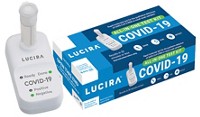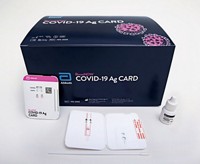Advertisement
Grab your lab coat. Let's get started
Welcome!
Welcome!
Create an account below to get 6 C&EN articles per month, receive newsletters and more - all free.
It seems this is your first time logging in online. Please enter the following information to continue.
As an ACS member you automatically get access to this site. All we need is few more details to create your reading experience.
Not you? Sign in with a different account.
Not you? Sign in with a different account.
ERROR 1
ERROR 1
ERROR 2
ERROR 2
ERROR 2
ERROR 2
ERROR 2
Password and Confirm password must match.
If you have an ACS member number, please enter it here so we can link this account to your membership. (optional)
ERROR 2
ACS values your privacy. By submitting your information, you are gaining access to C&EN and subscribing to our weekly newsletter. We use the information you provide to make your reading experience better, and we will never sell your data to third party members.
Support nonprofit science journalism
C&EN has made this story and all of its coverage of the coronavirus epidemic freely available during the outbreak to keep the public informed. To support us:
Donate Join Subscribe
Diagnostics
Covid-19
Rapid COVID-19 testing breaks free from the lab
Fast, portable systems could help to deliver routine infection screening as countries ease lockdowns
by Mark Peplow, special to C&EN
August 10, 2020
Countries emerging from COVID-19 lockdowns face a thorny dilemma. People are desperate to return to their workplaces and schools, but resuming public life also risks a catastrophic resurgence of the virus.
One way to reduce that risk is to expand the scope of diagnostic testing. So far, the majority of coronavirus tests have been conducted on samples from people with symptoms of COVID-19, such as cough or fever. But most infected people show no symptoms, even though they may be capable of infecting others. Public health officials hope to tackle that hidden threat by deploying more tests to screen asymptomatic individuals in places like nursing homes, universities, and even airports. “If we don’t test the asymptomatics, we won’t stop the spread of the virus,” says Bruce J. Tromberg, who leads part of the US National Institutes of Health’s Rapid Acceleration of Diagnostics (RADx) initiative.
To meet those expanded testing needs, the US, UK, and the European Union have recently invested in diagnostic tests that can be deployed in everyday settings, rather than specialized laboratories, so that infectious individuals and their contacts can be more quickly identified and isolated. “There’s clearly a need for more good-quality molecular testing, especially rapid handheld diagnostics,” says Sergio Carmona, chief access officer at the Foundation for Innovative New Diagnostics (FIND), a global nonprofit organization based in Geneva.
Demanding profile
On Aug. 5, the World Health Organization (WHO) released so-called target product profiles outlining the capabilities needed for such point-of-care tests. These include a sensitivity (true positive rate) of at least 70% and a specificity (true negative rate) of at least 97%, with results delivered in under 40 min. Each test should cost less than $20, use diagnostic machines with a price tag under $3,000, and the methods should be simple enough that users can run tests after a few hours of training.
Point-of-care diagnostics also need to operate reliably outside of a clean laboratory environment, says Hakho Lee, who develops diagnostic technologies at Massachusetts General Hospital Research Institute. “Especially for nucleic acid tests, there need to be safeguards against contamination,” because these tests are sensitive enough to detect stray nucleic acids from other sources, he says.
Few existing COVID-19 diagnostics can meet those specifications. Technologies that detect viral RNA in samples swabbed from the nose or throat typically rely on reverse transcriptase polymerase chain reaction (RT-PCR) technology, which uses enzymes to convert viral RNA into DNA and then make multiple copies of that genetic material for detection. It is the gold standard for diagnosing current infections, but most PCR-based testing is carried out by highly skilled technicians at centralized facilities, and is too slow for effective large-scale screening of asymptomatic individuals.
Antigen tests that detect viral proteins are potentially cheap and portable, but have generally struggled to match the accuracy of nucleic acid tests. Meanwhile, tests that pick up the body’s immune response to the virus only detect antibodies a week or so after a patient develops symptoms.

Faster, portable, easy-to-run methods to spot viral RNA could help to resolve this conundrum, and some options are already available. In the US, the most well known are Abbott’s ID Now and Cepheid’s Xpert Xpress, which both use toaster oven-sized machines to detect SARS-CoV-2 in under 1 h. But even though those companies are scaling up production, Tromberg says it will not be enough to meet US testing needs. “We need a diversity of test technologies to reduce pressure on the marketplace,” he says.
To stimulate that diversity, RADx announced July 31 that it would provide $248.7 million to support the wider rollout of seven COVID-19 diagnostics, which were selected from over 600 competing methods (N. Engl. J. Med. 2020, DOI: 10.1056/NEJMsr2022263). Three of these diagnostics are point-of-care techniques.
Mesa Biotech’s Accula system is a handheld device that automates the RT-PCR process. It accepts a slim cartridge containing a sample, and uses a lateral-flow visual readout—like in a pregnancy test—to indicate test results in about 30 min. Each device costs a few hundred dollars, with cartridges priced at about $20. Roughly 2,000 of the devices are already in use, and the company is producing about 140,000 COVID-19 test cartridges per month—RADx funding will help to scale up production.

Talis Biomedical’s Talis One uses a method called loop-mediated isothermal amplification (LAMP) and offers results in under 30 min. Regular RT-PCR cycles between different temperatures to break up double-stranded DNA and then amplify the nucleic acids. In contrast, RT-LAMP uses a DNA polymerase that can also separate double-stranded DNA along with short stretches of nucleic acids called primers that coax single strands into looped structures for further amplification. This process operates at a constant temperature of about 65 º C, which simplifies the equipment needed to run the reaction.
The third point-of-care device, Quidel’s Sofia 2, is an antigen test that displays results within 15 min. It uses antibodies on a lateral-flow strip that bind viral proteins in a sample and generate a fluorescence signal.

Although there have been concerns about the accuracy of results from both Sofia 2 and the Accula system (J. Clin. Microbiol. 2020, DOI: 10.1128/JCM.01072-20), Tromberg says they have performed well in the “exhaustive” validation process carried out during the RADx selection process.
Those validation results are not yet public. But as testing ramps up, and the incidence of disease hopefully declines, it will become even more important for these tests to demonstrate very high specificity, says Jonathan J. Deeks, a medical statistician at the University of Birmingham. “When you get down to really low prevalence, if the specificity isn’t close to 100%, a lot of the tests will be false positives,” he says.
Tromberg estimates that existing diagnostic methods in the US have the potential to run 2.6 million COVID-19 tests per day by the end of the year. With the help of the new technologies moving through the RADx pipeline, it may be possible to reach 6 million tests per day, he says.
Lack of transparency

Other governments are also investing in rapid-test development. The European Union’s Horizon 2020 has contributed almost $47 million this year to the development a range of new COVID-19 diagnostics. These include Hibergene’s HG COVID-19 test, another portable LAMP-based PCR system that can deliver results in 30 min. The Hibergene test has been commercially available since late May.
And the UK government announced on Aug. 3 that it will start using two point-of-care COVID-19 diagnostics in nursing homes. Both offer results in under 90 min, and will be rolled out starting in September.
One of the tests, Oxford Nanopore’s LamPORE assay, uses LAMP to amplify viral nucleic acids. Then, its desktop GridION or palm-sized MinION devices identify SARS-CoV-2 sequences by running the amplified DNA through a protein nanopore. As the nucleic acids pass through, they cause tiny changes in an electrical current across the pore, which reveals the sequence of bases. The UK government has placed an initial order of 450,000 tests, for an undisclosed sum.
The other method comes from DnaNudge, a company that usually offers a service to identify customers’ genetic predisposition to conditions such as obesity or type 2 diabetes, and then provides tailored health and lifestyle advice. In March, it created a SARS-CoV-2 assay for its handheld RT-PCR device, and the UK government has now placed a $210 million order for 5.8 million test kits.
Both LamPORE and the DnaNudge assay have undergone clinical evaluations, although the results of those trials are not yet public. There are also few details about how the tests are operated, or how the UK government selected them. “The actual process by which decisions are being made about tests is not transparent,” Deeks says. Until that information is available, it is difficult to assess how much impact these methods will actually have in the UK.





Join the conversation
Contact the reporter
Submit a Letter to the Editor for publication
Engage with us on Twitter